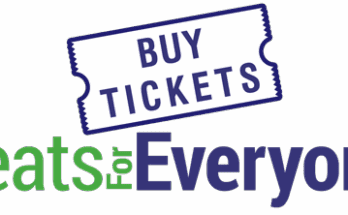You hear the opening chords, the crowd roars, and suddenly you’re singing along with thousands of other fans. There’s nothing quite like the energy of live music, and a big part of that magic comes from the concert tour. Planning to catch your favorite artist? Understanding what goes into a concert tour can make you appreciate the experience even more. A concert tour is basically a series of live performances by an artist or band across different cities, states, or even countries. It happens over a set period. Think of it like a traveling roadshow centered around music. The core idea is to bring the music directly to the fans, rather than having fans travel to one single location. Tours can range wildly in size. Some might cover a handful of cities and tour dates in one region, while others are massive international journeys spanning months and multiple continents. It all depends on the artist’s popularity, budget, and goals.
Why Do Artists Embark on a Concert Tour?
So, why do musicians pack their bags and hit the road? There are several big reasons. It’s not just about playing music night after night. First, promoting new music is a huge driver. When an artist releases a new album, a tour is the best way to get those songs heard live. It builds excitement and helps drive album sales or streams. Connecting with fans is also critical. Live shows create a powerful bond between the artist and their audience. This shared experience is something recordings just can’t replicate. And yes, money is definitely a factor. For many artists, especially in the age of streaming, touring is a major source of income. Ticket sales and merchandise sold at shows can be quite profitable, as reported by the RIAA showing shifts in music revenue streams. Finally, touring helps build an artist’s brand. Playing in different places exposes them to new potential fans. It keeps them relevant in the ever-moving music scene.
The Intense Planning Phase
Putting together a concert tour is a massive undertaking. It involves months, sometimes years, of careful planning. This happens long before the first note is played. The first step is deciding the tour’s scope. Will it be a small club tour, a theater run, an arena spectacle, or a giant stadium tour? This depends on the artist’s current popularity and fan base size in different regions. Then comes the crucial task of booking venues. Tour planners work to secure dates at suitable locations. They have to consider availability, capacity, technical capabilities, and cost. Routing the tour is like solving a giant puzzle. Planners need to create a logical path between cities to minimize travel time and expenses. They factor in driving distances, flight times, and necessary days off for rest and travel. Setting the schedule involves coordinating all these elements. It means lining up venue dates, travel days, and ensuring the whole thing flows smoothly. This requires complex logistical work.
What’s Life Like on the Road?
Life on a concert tour can seem glamorous, but it’s also incredibly demanding. Imagine moving your entire workplace to a new city every day or two. That’s essentially what artists and their crews do. Travel is constant, often involving long hours on tour buses or flights. While custom tour buses can be comfortable, it’s still a confined space shared with many people. This lifestyle requires serious stamina. A huge team supports the artist on the road. This includes the tour manager overseeing everything, roadies loading gear, sound and lighting engineers making the show happen, security, merchandise sellers, and many others. Everyone has a critical role. Each show day involves a familiar rhythm. The crew arrives early to unload trucks and meticulously set up the stage, sound systems, and lights. The artist typically does a soundcheck in the afternoon to prepare for the evening performance. After the show, it’s time to tear everything down, pack it up, and get ready to move to the next city. This cycle repeats over and over. It demands dedication and hard work from everyone involved.
The Thrill for the Fans
For fans, a concert tour brings waves of excitement. It starts the moment the tour is announced. Anticipation builds quickly. Getting tickets can be an adventure in itself. Fans often wait anxiously for presales of concert tickets or general on-sale dates. Popular tours can sell out in minutes, making ticket acquisition a tense experience sometimes. Leading up to the show, fans get ready. They might listen to the artist’s albums, plan what to wear, or arrange travel if the show is out of town. The buzz grows as the concert date nears. The concert itself is the main event. Being in a crowd sharing the energy, seeing the artist perform live, and hearing favorite songs creates powerful moments. It’s a communal experience unlike any other. Buying merchandise like t-shirts or posters is part of the ritual too. It gives fans a tangible memory to take home. These moments often become cherished memories talked about for years.
Different Flavors of Concert Tours
Not all concert tours are the same. They come in various forms, often reflecting the artist’s goals or current career stage. Let’s look at a few common types. Album release tours are probably the most frequent. Artists hit the road soon after dropping a new record. The setlist heavily features the new songs mixed with older hits. Greatest hits or reunion tours are also popular. Established bands might reunite after a long time apart or tour just playing their classic songs. These often attract nostalgic fans. Sometimes artists join festival circuits. They play multiple large music festivals as part of their touring schedule. This exposes them to diverse crowds. Co-headlining tours involve two or more similarly popular acts sharing the bill. They might alternate who closes the show each night. This offers fans great value, seeing multiple big names. Then there are residencies. Instead of traveling, an artist sets up shop in one city, like Las Vegas or New York, for an extended run of shows. It’s less grueling than traditional touring but limits geographic reach.
The Money Side of Touring
Running a concert tour is a complex business. There’s a lot of money coming in, but also huge expenses going out. Making a tour profitable takes careful financial management. The main income sources are clear:
- Ticket Sales: This is usually the largest chunk of revenue. Prices vary based on the artist’s popularity and seat location.
- Merchandise: T-shirts, hoodies, posters, and other items sold at shows generate significant income. Profit margins on merch can be high.
- Sponsorships: Sometimes companies pay to have their brand associated with a tour. This adds another revenue stream.
But the costs are substantial too:
- Production: Building and transporting the stage, lights, sound equipment, video screens, and special effects is expensive.
- Crew Salaries: The large team supporting the tour needs to be paid.
- Travel & Accommodation: Moving people and gear between cities, plus hotel costs, adds up fast.
- Venue Rentals & Fees: Venues charge fees or take a percentage of ticket sales.
- Insurance & Marketing: These necessary costs protect the tour and promote the shows.
Here’s a simplified look at potential finances for one arena show:
| Item | Potential Income | Potential Cost |
|---|---|---|
| Ticket Sales (10,000 seats x $100 avg) | $1,000,000 | |
| Merchandise Sales | $150,000 | |
| Venue Rental / Fees | $150,000 | |
| Production Costs (per show allocation) | $250,000 | |
| Crew Salaries / Travel / Hotels (per show) | $200,000 | |
| Artist Guarantee / Percentage | $400,000 | |
| Marketing / Insurance / Misc | $50,000 | |
| Estimated Net (before taxes) | $1,150,000 | $1,050,000 |
| Profit: $100,000 |
Note: These numbers are purely illustrative examples and actual figures vary wildly. As you can see, the margins might be tighter than expected. For smaller artists playing clubs, breaking even can be a real challenge. Profitability often depends on selling lots of merchandise and keeping costs tightly controlled.
How Do You Find Upcoming Concert Tours?
Want to know when your favorite band is hitting the road? Finding concert tour information is easier than ever. There are many ways to stay updated. Check the artist’s official website and social media channels first. Bands almost always announce tours there directly. Signing up for their email newsletter is also a good idea. Reputable music news sources are great resources. Websites like Billboard Concerts or Consequence of Sound track tour announcements constantly. They cover a wide range of genres. Local venue websites are useful too. If you know where artists typically play in your city, check the venue’s calendar or join their mailing list. They often announce shows before they appear elsewhere. Don’t forget fan clubs. Official fan clubs frequently offer members early access to tour news and sometimes even exclusive ticket presales. It can be a good perk for dedicated followers. Finally, general ticket platforms compile huge lists of upcoming shows. While browsing there, you can often filter by city, date, or artist to see what concert tours are coming your way.
Concert Tours Through the Years
The idea of musicians traveling to perform isn’t new, but the modern concert tour has evolved significantly. Early tours in the mid-20th century were simpler affairs. Think Elvis Presley or The Beatles playing theaters and halls. As rock music grew in the 60s and 70s, tours got bigger. Arena rock became a phenomenon, with bands like Led Zeppelin and Queen putting on massive shows. Production values started increasing and of course you are always in las Vegas and Los Angeles a lot. Technology has played a huge role in shaping tours. Better sound systems, dazzling light shows, and giant video screens became standard. Logistics also improved, letting bands cover more ground efficiently and deal with huge stadiums like MetLife Stadium. Today, social media heavily influences tours. Artists use platforms like Instagram and TikTok to announce dates, share behind-the-scenes glimpses, and interact with fans. This builds hype and connection. There’s also a growing focus on sustainability. Artists and tour organizers are looking for ways to reduce the environmental impact of touring. Organizations like REVERB partner with musicians to implement greener practices, like reducing waste and offsetting carbon emissions.
Conclusion
A concert tour is so much more than just a series of shows. It’s a traveling city built around music, a massive logistical operation, and a vital connection point between artists and fans. From the initial planning stages to the final encore, countless hours and immense effort go into making each performance happen. Understanding the journey behind the music can deepen your appreciation the next time you’re experiencing the unforgettable energy of a live concert tour. Title: What is a Concert Tour? Your Guide to Live Music Journeys
Table Of Contents:
- Why Do Artists Embark on a Concert Tour?
- The Intense Planning Phase
- What’s Life Like on the Road?
- The Thrill for the Fans
- Different Flavors of Concert Tours
- The Money Side of Touring
- How Do You Find Upcoming Concert Tours?
- Concert Tours Through the Years
- Conclusion


